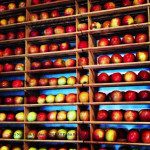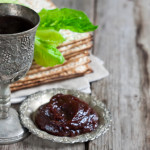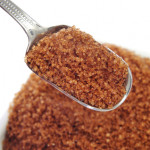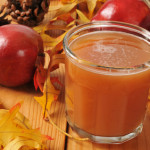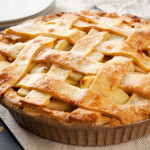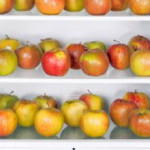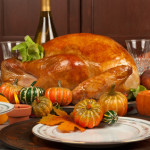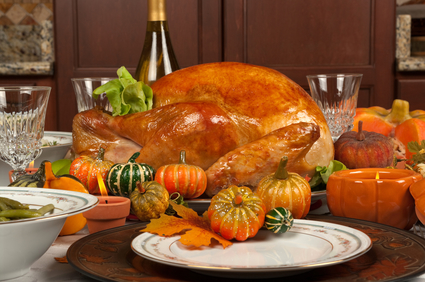Last night I had the pleasure of going to David Bouley’s Tribeca restaurant,Bouley. I have to say that it is one of the most beautiful dining rooms that I’ve seen in a very long time. Here is a photo that I took of the entrance. A wonderful display of fresh apples greet you when entering the restaurant. The aroma was ridiculously intoxicating.
Brown Sugar
Most brown sugars are made of white granulated sugar to which a dark syrup has been added. Dark brown sugar has a mild molasses, and light brown sugar has a milder, lighter syrup, which may also be molasses. Dark brown has a slightly stronger flavor, but they may be used interchangeably.
You can easily make your own brown sugar, as you need it by blending together 1/2 cup of granulated sugar with 2 tablespoons of unsulphured molasses. The yield is equivalent to 1/2 cup of brown sugar.
Brown sugar is moist and if it dries out it will harden. It should be stored airtight at room temperature. If it has small lumps in it they should be strained out. With your fingertips press the sugar through a large strainer over a large bowl. If your brown sugar has been left open and becomes hard, place a dampened (not wet) paper towel inside the airtight container for 12 hours or more. A slice of apple can be used in place of the dampened towel.
"Work With What You Got!"
© Victoria Hart Glavin Tiny New York Kitchen
We've all heard the saying, "An Apple A Day Keeps the Doctor Away." Well it's the truth! A large apple contains 5 grams of fiber, which maintains healthy glucose levels, reduces the risk of heart disease, and promotes good digestion. Furthermore, an apple is fat and cholesterol-free, and low in sodium and calories, which helps one maintain a healthy weight.
36 Apples = 1 Gallon Of Cider
Not sure how many apples you need to make an apple pie? One pound of apples is roughly 4 small, 3 medium, or 2 large apples. When you're making a 10 inch apple pie and the recipe calls for 2 1/2 pounds, then you will need 9 small, 7 medium, or 5 large apples.
While fruit bowls are pretty to look at, store apples in the refrigerator to keep them crisp longer. When they are kept cold, apples can stay nice and crunchy for weeks. Keep them away from aromatic foods like onions, as apples tend to absorb odor.
 Constitution Week – Foods of Our Forefathers Part III
Constitution Week – Foods of Our Forefathers Part III
The abundance of meat in America was a major change in the diet of the early settlers. Rabbits and squirrels were available year-round nearly everywhere, plus deer and other large game in many regions. As settlers moved west, buffalo gained importance in the diet. Fish, shellfish and wild fowl became common food, and they were all essentially “free.” The existence of these various forms of game was a literal life saver in times of uncertain crops and unbroken land. The game gradually diminished, of course, as the population expanded and settlers pushed west, but it provided a large share of the diet in early and frontier days.
Ham, of course, appeared on almost every settler’s table, rich or poor. It might be the only meat served at a meal or it might appear in company with more exotic roasts and fowl, but it was always there – breakfast, dinner and supper.
Corn was also a staple of the colonists, either fresh in summer, or as hominy or corn meal all year. Corn was also put to another use by an early Virginian, Captain George Thorpe, who may have been the first food technologist in America as he invented Bourbon whiskey shortly before he was massacred by the Indians in 1622.
Meal patterns for working people in rural early America were very different from those common today. Breakfast was usually early and light which consisted of bread, hominy grits, and sometimes fruit in season. Coffee, which was a new beverage at the time, was popular that is if it was available. A drink made from caramelized grain was sometimes substituted. Chicory was popular in the South, either alone or used to stretch the coffee. Tea was often made from local leaves such as sage, raspberry or dittany. Alcohol in some form was often served.
Breakfast in more elegant homes or large plantations might be later in the morning, and include thinly sliced roast and ham.
Dinner was served somewhere between midday and midafternoon, depending on the family’s circumstances, and was the big meal of the day. There was almost always ham, as well as greens (called sallat), cabbage and other vegetables. In the proper season, special dainties would appear – fresh fruits and berries, or fresh meat at appropriate butchering times.
Desserts could be simple such as a scooped out pumpkin, baked until done and then filled with milk, to be eaten right out of the shell. Or dessert could be more complex such as ice cream or other fruit flavored frozen pudding or a blanc mange. Blanc mange was prepared from milk and loaf sugar, flavored with a tablespoon or two of rosewater, thickened with a solution of isinglass (derived from fish bladder, soaked overnight in boiling water). This mixture was boiled for 15 to 20 minutes, then poured into molds to set.
If isinglass was not available (most was imported from England), homemade calves foot jelly could be substituted, but eh dessert was not as fine.
Various alcoholic beverages, including wines, applejack, “perry” (hard cider made from pears), or beer were commonly consumed.
In winter, peaches and other fruit disappeared from the dinner table, to be replaced by dishes made from stored apples and dried fruit of various sorts. Soups or broths also took their place. Milk grew scarce as cows “dried up” in the short days. Vegetables gradually decreased in variety as stored crops wilted.
Apples quickly became a staple in early America. Orchards were easy to start, required a minimum of care, and apples stored well. Housewives devised a multitude of “receipts,” including sauces and butters for off-season, as well as many using dried apples.
Supper was late and a light bread and butter, some of the left-over roast from dinner, fruit (fresh if in season, pickled and spiced otherwise), and coffee or tea.
To Be Continued…

